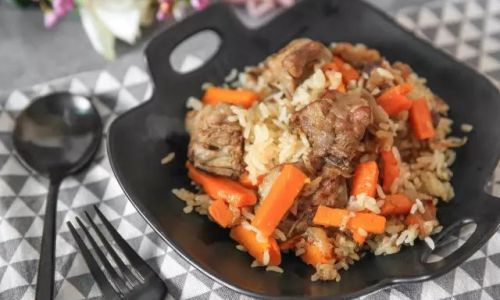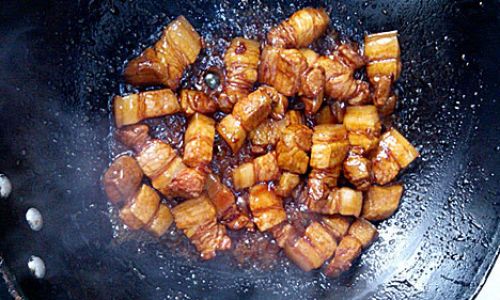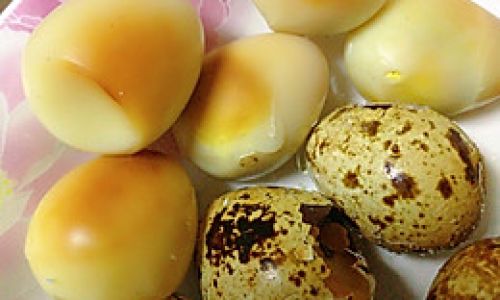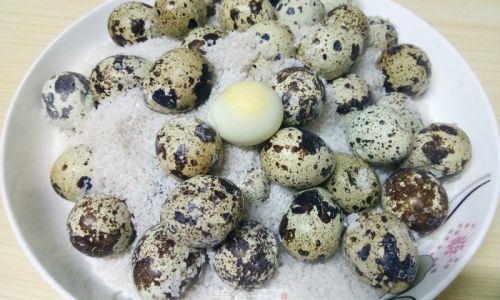Introduction
Mutton pilaf, also known as goat rice or mutton pawar in various regions of Asia, is a hearty and flavorful dish that combines tender pieces of mutton with fragrant basmati rice, aromatic spices, and fresh vegetables. This traditional dish is a staple in the cuisines of Central Asia, South Asia, and the Middle East, where it is celebrated for its rich taste and satisfying texture. Whether you’re looking to recreate a beloved family recipe or explore new culinary territories, learning how to make mutton pilaf can be a rewarding culinary adventure. In this article, we’ll walk you through the step-by-step process of crafting a perfect pot of mutton pilaf, ensuring that every bite is as delicious as the last.
Ingredients
Before diving into the cooking process, let’s gather all the necessary ingredients. For a classic mutton pilaf, you’ll need:

- Mutton: 1.5 kg (about 3.3 pounds) of boneless mutton, preferably leg or shoulder cuts, cut into bite-sized pieces
- Basmati Rice: 500g (about 1.1 pounds)
- Onions: 3 large, finely chopped
- Tomatoes: 2 medium, finely chopped (optional, but adds a tangy sweetness)
- Garlic: 6 cloves, minced
- Ginger: 1 large piece (about 2 inches), grated or finely chopped
- Green Cardamom Pods: 6-8
- Black Peppercorns: 1 teaspoon, crushed
- Cinnamon Sticks: 2 small pieces
- Cloves: 6-8
- Bay Leaves: 2-3
- Cumin Seeds: 1 teaspoon
- Coriander Seeds: 1 teaspoon (optional, but enhances the aroma)
- Turmeric Powder: 1/2 teaspoon
- Red Chili Powder: 1 teaspoon (adjust to taste)
- Garam Masala: 1 teaspoon (for a fragrant finish)
- Fresh Coriander Leaves: A handful, chopped (for garnish)
- Mint Leaves: A handful, chopped (for garnish)
- Vegetable Oil or Ghee: 4-5 tablespoons
- Salt: To taste
- Water: As needed for cooking the rice and mutton
- Lemon Juice: 1 tablespoon (optional, for brightening the flavors)
- Yogurt or Dahi (optional, for marinating the mutton): 1/2 cup
Preparation
-
Marinating the Mutton (Optional but Recommended):
In a large bowl, combine the mutton pieces with yogurt, 1 teaspoon turmeric powder, 1 teaspoon red chili powder, 1 teaspoon salt, and the juice of half a lemon. Mix well to coat all pieces evenly. Cover and let it marinate in the refrigerator for at least 1 hour, preferably overnight. This step tenderizes the meat and deepens its flavors.
-
Cooking the Mutton:
- Heat 2-3 tablespoons of oil or ghee in a heavy-bottomed pot over medium heat. Add the cumin seeds, coriander seeds, and let them crackle.
- Add the chopped onions and sauté until they turn golden brown. This should take about 5-7 minutes on medium heat.
- Stir in the minced garlic and grated ginger. Cook for another 1-2 minutes until fragrant.
- Add the marinated mutton pieces (discarding the marinade), along with the crushed black peppercorns, cinnamon sticks, cloves, bay leaves, and remaining turmeric powder and red chili powder. Stir well to coat the meat with the spices.
- Cook the mutton on medium-high heat for about 10 minutes, stirring occasionally, until the meat starts to brown.
- If using, add the chopped tomatoes and cook until they soften and blend into the mixture. This will add a natural sweetness and tang to the dish.
- Pour in enough water to cover the mutton by about 1 inch. Bring the mixture to a boil, then reduce the heat to low, cover, and let it simmer for about 1 hour or until the mutton is tender and the gravy has thickened slightly. Check and adjust the seasoning with salt as needed.
-
Preparing the Rice:
- While the mutton is cooking, rinse the basmati rice under cold running water until the water runs clear. Soak the rice in a large bowl of water for about 30 minutes. This helps to soften the grains and ensures even cooking.
- Drain the soaked rice and set it aside.
-
Combining the Rice and Mutton:
- Once the mutton is tender and the gravy has thickened, taste and adjust the seasoning. If the gravy is too watery, cook it uncovered for a few more minutes to reduce.
- Spread the drained rice evenly over the mutton, making sure not to stir it in.
- Carefully pour enough hot water over the rice to cover it by about 1/2 inch. The water level should be just above the rice level, not submerging the mutton pieces.
- Taste the water and add a pinch of salt if needed. Remember, the rice will absorb the flavors of the mutton gravy, so don’t over-salt the water.
- Cover the pot tightly with a lid and let it cook on low heat for about 15-20 minutes, or until the rice is tender and has absorbed all the water. Avoid opening the lid during this time to ensure the rice cooks evenly.
-
Finishing Touches:

- Once the rice is cooked, turn off the heat and let the pot sit covered for an additional 5-10 minutes. This helps the rice to steam further and become fluffy.
- Gently fluff the rice and mutton mixture with a fork, being careful not to break the grains.
- Sprinkle the garam masala evenly over the pilaf and gently fold it in.
- Garnish with freshly chopped coriander leaves and mint leaves.
-
Serving:
Serve the mutton pilaf hot, accompanied by a side of raita (yogurt salad), pickles, or a fresh green salad. It also pairs wonderfully with a tangy tomato chutney or a dollop of ghee on top.
Tips and Variations
- Marinating the Mutton: While marinating is optional, it significantly enhances the flavor and tenderness of the meat. If you’re pressed for time, you can skip this step but increase the cooking time for the mutton slightly.
- Rice Cooking: Using basmati rice is crucial for achieving the distinct aroma and texture associated with traditional pilafs. Make sure to rinse and soak the rice before cooking to prevent it from becoming mushy.
- Spices: Adjust the spice levels according to your taste preferences. If you prefer a less spicy dish, reduce the amount of red chili powder.
- Vegetarian Option: For a vegetarian version, substitute the mutton with potatoes, carrots, peas, and beans. Adjust the cooking time accordingly to ensure the vegetables are tender.
- Storage: Leftover mutton pilaf can be stored in an airtight container in the refrigerator for up to 3 days. Reheat gently before serving to maintain its texture and flavor.
Conclusion
Making mutton pilaf may seem like a complex dish, but with the right ingredients and careful attention to cooking techniques, you can achieve a restaurant-quality meal at home. This hearty and flavorful dish is perfect for family gatherings, festive occasions, or simply enjoying a comforting meal after a long day. Whether you’re a seasoned chef or a novice cook, the joy of crafting a perfect pot of mutton pilaf lies in the blend of aromatic spices, tender meat, and fluffy rice, all coming together in harmony. So, gather your ingredients, roll up your sleeves, and embark on a culinary journey that promises to delight your taste buds and nourish your soul. Bon appétit!






0 comments